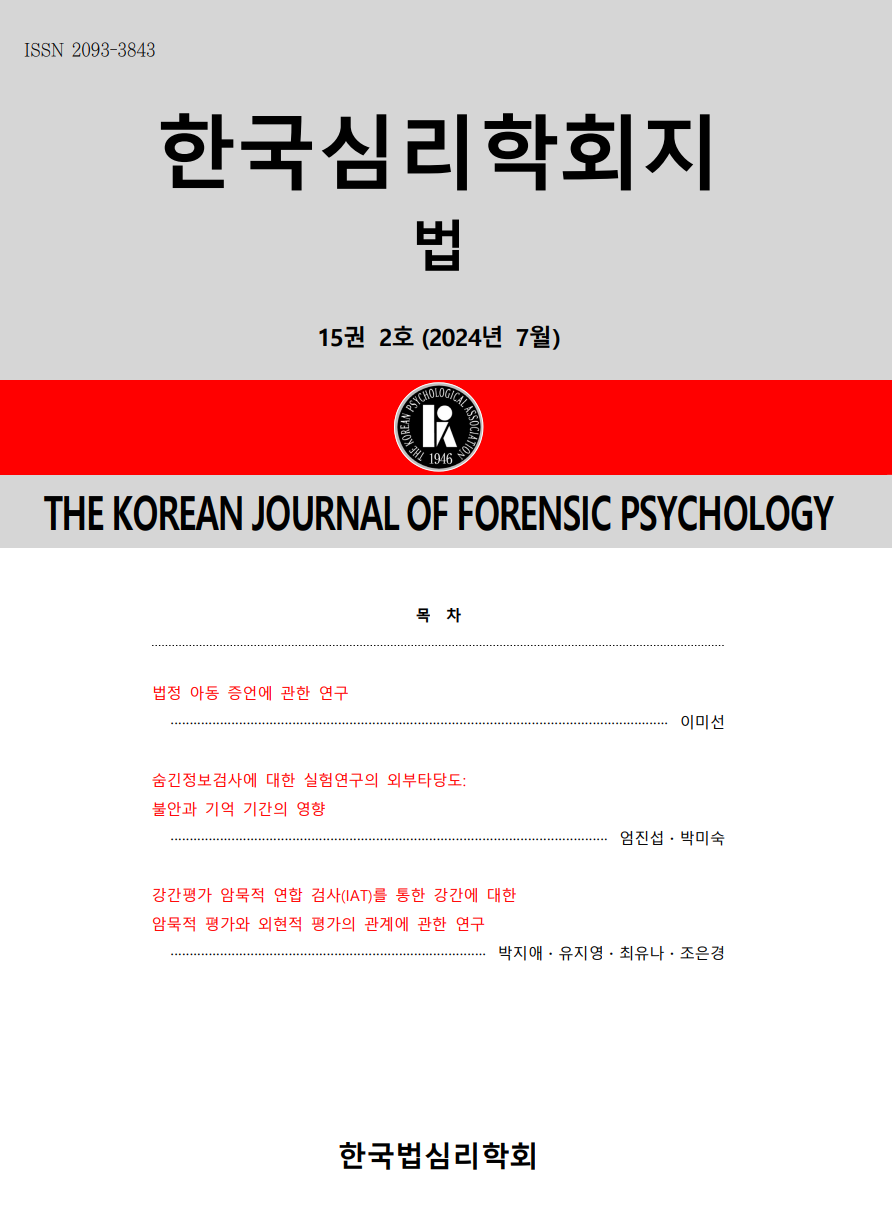open access
메뉴
open access
메뉴 ISSN : 2093-3843
ISSN : 2093-3843
Source monitoring (SM) plays an indispensable role in children’s lives, requiring essential skills to mediate their ability in various cognitive and social functions. The accuracy of such skills significantly impact children’s knowledge base and beliefs about the world. The current review aimed to present a vast and comprehensive review of research on children’s SM, exploring the results of applied and experimental studies. The discussion also addressed applied research related to children’s SM involving the misinformation effect paradigm as well as training children in SM skills. This review served to propose a window into a coherent starting point for researchers investigating children’s SM, building a valuable synthesis of currently available information to identify critical areas for potential future research.
The objective of this paper is to derive some PAI profile patterns of the malingering offender in forensic setting and in detail the detection of malingering(NIM, RDF, MAL) of PAI. For this study, we divide 64 pre-trial forensic offender sent in national forensic hospital into the probable malingering group(n=17) and the non-malingering group(n=47). The probable malingering group is classified as those who get above 6 of M-FAST among offenders judged as normality by psychiatric evaluation. The non-malinger group is classified as those who get under 6 of M-FAST among offenders judged as normality and schizophrenia(n=25) by psychiatric evaluation. The result of analytical researches on the difference of clinical scales of PAI between the probable malingering group and the non-malinger group shows that the former is significantly higher than the latter in most clinical scales. Especially, it is reported that the probable malinger group shows significantly higher in schizophrenia scale than the non-malinger group with schizophrenia. On inquiry on the assessment of three related malingering scales of PAI, the result of ROC analysis shows that AUC .856 of NIM scale is the highest in 3 scales. Finally, the optimum NIM scale cutoff score was revealed as 76T(sensitivity=.765, specificity=.851, PPP=.650, NPP=.909).
This study compared crime scene actions of serial arsonists with those of non-serial arsonists and analyzed the type of serial arsonists based on crime scene actions. 127 cases was selected through Scientific Crime Analysis System run by Korean National Police Agency. These cases were classified as single arson, spree arson and serial arson. As a result, there are several significant differences. When serial arsonists selected a target, It was opportunistic. They typically walked to the scene of the crime and designed the arson previously. The motive serial arsonists set fires is to gain the psychological gratification or to relieve his stress. Serial arsonits were classified as four types: despair, display, revenge and profit motivated serial arsonists.
The purpose of this study is to develop a PTSD Assessment Scale for victims of Domestic Violence and examine its construct validity. Post Traumatic Stress Disorder(PTSD) is the most common mental disorder among victims of domestic violence. This is why accurate assessment is important from the viewpoint of victim treatment. Twenty six items were generated through the previously published literature, especially DSM-IV. With this final scale, an investigation has been executed to victims of domestic violence and married women. From the exploratory factor analysis, two factors have been derived: re-experiencing/ avoidance, emotional numbing/hyper arousal. Significant correlations were shown between the PTSD Assessment Scale and PDS (Posttraumatic Diagnostic Scale), the PTSD Assessment Scale and IES-R (Impact of Event Scale-Revised), PDS and IES-R. Two groups (victims of domestic violence group and married women group) showed significant differences within each scale, the PTSD Assessment Scale, PDS and IES-R. The research limitations and further studies were discussed.